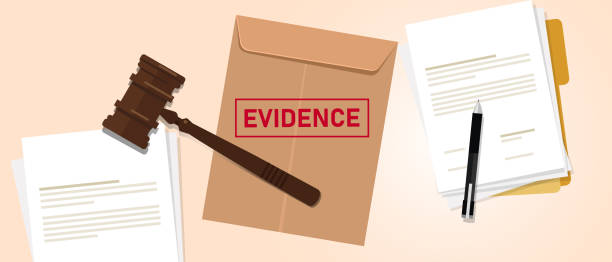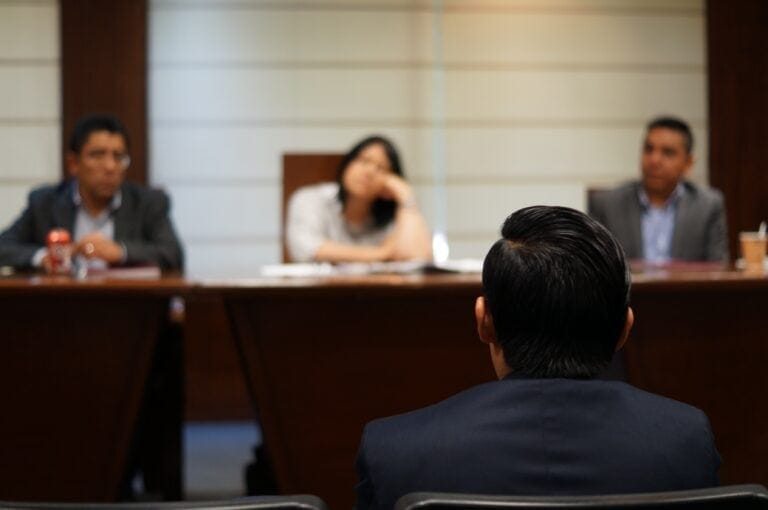Hearsay evidence refers to an out-of-court statement made by someone other than the witness. Parties offer this type of evidence to prove the truth of the matter being asserted. In simpler terms, it is information that a second or third party relays, even if they have not directly observed or experienced it themselves.
When it comes to legal proceedings, evidence plays a crucial role in determining the outcome of a case. However, not all types of evidence are admissible in court. One such type is hearsay evidence, which holds particular significance in the Australian legal system. In this article, we will delve into the concept of hearsay evidence in Australia. We will also cover:
- Its relevance in criminal law matters;
- An example scenario; and
- The importance of seeking legal advice to navigate this complex area.
Is Hearsay Evidence Admissible?
In Australia, the general rule is that hearsay evidence is inadmissible. However, there are several exceptions to this rule. The courts recognise that there are circumstances where the reliability and necessity of hearsay statement outweigh the risks associated with its introduction.
Section 59 of the Evidence Act 1995 in Australia encapsulates the hearsay rule. The section prohibits the admissibility of previous statements to prove facts intended to be asserted. This rule restricts the use of hearsay evidence in court proceedings, as it emphasises the importance of first-hand testimonies and direct evidence.
But, Section 60 of the Evidence Act provides a significant exception to the hearsay rule. It states that if a previous representation is admitted into evidence for a purpose other than proving its truth, it becomes relevant for all purposes. This includes the hearsay purpose. In simpler terms, if a statement is allowed as evidence for a non-hearsay reason, it can also be considered for its truth value.
Exceptions to the Hearsay Rule
Evidence relevant for the non-hearsay purpose (Section 60): Hearsay evidence given for a non-hearsay purpose is not subject to the hearsay rule. For example, prior inconsistent statements that a witness makes can be used to prove the truth of the facts contained in them.
Maker is unavailable (Section 65): If the maker of a statement is unavailable in criminal proceedings, certain circumstances may allow for the admission of hearsay evidence, such as when the statement was made by someone under a duty to make it or if it is highly probable to be reliable.
Maker available (Section 66): When the maker of a statement is available in criminal proceedings, such evidence from another person who perceived the representation and has a fresh memory of the events can be admissible.
Tags and labels (Section 70): The hearsay rule does not apply to tags and labels affixed to objects or documents in the course of a business that describes their contents.
Electronic communications (Section 71): The hearsay rule does not apply to certain information in electronic communications, such as the identity of the sender, the date and time of the communication, and the recipient’s identity.
Relationships and age (Section 73): In civil matters, the hearsay rule does not apply to evidence related to marital status, age, family history, or family relationships. In criminal matters, this exception applies if reasonable notice is given or if the evidence contradicts other admitted evidence.
The reputation of public or general rights (Section 74): In criminal cases, the prosecution can use hearsay evidence related to public or general rights to contradict assertions by the defence.
Evidence in interlocutory proceedings (Section 75): Hearsay evidence can be admissible in interlocutory proceedings if the party can establish its source.

Hearsay Rule: Example Scenario
Imagine a robbery case where the prosecution is trying to adduce hearsay evidence. The prosecution states that Mark, the defendant, was the person responsible for the crime. The prosecution presents a witness, Sarah, who testifies that her friend Lisa told her that Mark admitted to committing the robbery.
In this scenario, Sarah’s testimony about Lisa’s statement constitutes hearsay evidence. Sarah is relaying information that someone else (Lisa) communicated to her. Additionally, the statement is being offered to prove that Mark committed the robbery. Since this is an out-of-court statement that Lisa made (someone other than the witness), it falls within the definition of hearsay.
The admissibility of this hearsay evidence will depend on various factors. This includes the exceptions to the hearsay rule. For instance, let’s suppose that Lisa is unavailable to testify in court. Then the prosecution may argue that the statement falls under the exception of “statements against interest”. This is because Lisa’s admission would incriminate Mark. The court will then evaluate the reliability and necessity of the hearsay evidence and determine whether they should admit it.
Relevance of Hearsay Evidence in Criminal Law Matters
In criminal law matters, we cannot underestimate the relevance of hearsay evidence. It often serves as a crucial piece of the puzzle in establishing guilt or innocence. However, it is important to note that the admissibility of hearsay evidence can heavily impact the strength of a case. Let’s explore this further.
Prosecution’s Perspective
From the prosecution’s standpoint, hearsay evidence can provide crucial support to their case. It allows the introduction of statements made by witnesses who may no longer be available or willing to testify. For example, if a witness who made a statement identifying the accused as the perpetrator is unable to appear in court, their statement may be admitted as hearsay evidence. This can help the prosecution build a compelling case against the accused.
Defence’s Perspective
From the defence’s perspective, the admissibility of hearsay evidence can be both a blessing and a curse. On one hand, it can provide an opportunity to challenge the reliability or credibility of the evidence. The defence may argue that the statement lacks first hand knowledge or external factors influenced it. This therefore undermines its probative value.
On the other hand, hearsay evidence can also work against the defence. This is because it may introduce additional incriminating statements that the court cannot effectively cross-examine.
How Do You Give Proper Evidence?
- Tell the truth and stick to what you personally witnessed: Provide honest and accurate testimony based on your own firsthand knowledge.
- Be clear, specific, and organised in your testimony: Clearly articulate the events, details, and circumstances related to the case in a logical and organised manner.
- Listen carefully, answer accurately, and avoid speculation: Pay attention to questions, take time to understand them, and respond with concise and direct answers without guessing or speculating.
- Remain composed, respectful, and follow court rules: Maintain a calm and respectful demeanour, adhere to civil proceedings, and show respect for the legal process and any person intended to cross-examine you.
- Seek legal advice if needed: Consult with a qualified criminal defence lawyer to address any concerns or questions you may have about presenting your evidence effectively.

Seeking Legal Advice From Criminal Lawyers
Hearsay evidence in Australia plays a significant role in criminal law matters, despite its general inadmissibility. Understanding the exceptions to the hearsay rule and their applicability is crucial for both the prosecution and the defence. If you find yourself entangled in a legal matter involving hearsay evidence, it is vital to seek professional legal advice.
Experienced criminal defence lawyers possess the knowledge and expertise to navigate the intricacies of hearsay evidence and its admissibility. Our criminal lawyers at JB Solicitors can guide individuals with:
- The legal process,
- Help them understand the relevance of hearsay evidence in their case, and
- Devise effective defence strategies.
Message us if you need legal assistance with a criminal proceeding
